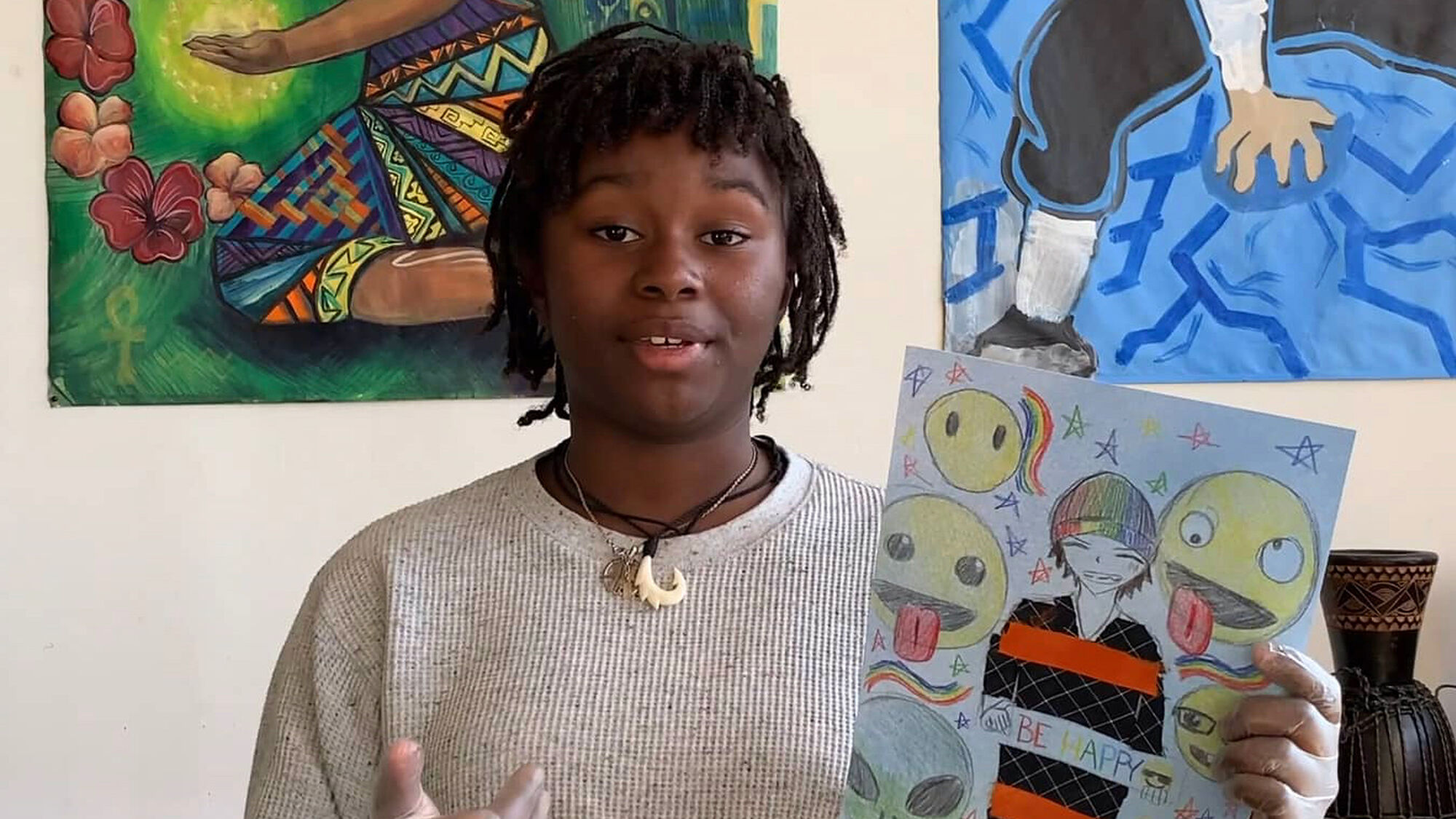For seventh graders growing up in East Oakland, gun violence is a regular experience. Even before the coronavirus quarantine, these children couldn’t play outside or ride their bikes because families feared for their safety, said seventh grade humanities teacher Athena Larios, who teaches at Lighthouse Charter School in Oakland, CA.
Lighthouse’s unique learning model, which allows students to dive deep into topics that they care about, was helping them to realize their ability to make change in their lives and community.
Lighthouse follows an expeditionary learning education model, which means students combine several disciplines to do an in-depth study of a single theme or topic of interest. In 2016, students at Lighthouse chose gun violence prevention as their topic and teachers developed a three-month curriculum that the school has used since.
In math class, for example, seventh graders learn about rates of gun violence deaths and how rates differ by neighborhood. In humanities classes, they learn about the Second Amendment, read case studies about the Black Panthers’ history in Oakland, and explore themes of toxic masculinity, discussing how pressures placed on boys and men can lead to gun violence. Students document their learning and process through op-eds, podcasts, video, and spoken word. In the past they have held a community exhibition at a local art gallery.
The curriculum also includes a large art and community component. Partnering with the nonprofit Vision Quilt, students created quilt panels reflecting their experience with gun violence. The quilt reveals the collective impact of gun violence on a community, much like the AIDS quilts in the 1990s.
“Kids put their heart and soul onto this piece of fabric,” said Cathy DeForest, who runs Vision Quilt. “They are also writing artist statements about what they created. It’s their story and it’s a universal story. People [at the exhibitions] are just astounded by what a 12- or 13-year-old is saying.”
This year, Addressing Gun Violence: Creating Visionaries, Storytellers, Community Activists was expanded with the help of the National Writing Project LRNG Innovators Challenge grant. The grants are part of the partnership between NWP and John Legend’s Show Me Campaign to help educators extend time and space for connected learning.
At Lighthouse, the expansion included a new arts curriculum, a new teen council program that brings back older students to support seventh graders and advise teachers on planning and project scope.
“They helped us hone the evaluation, experiment with the art curriculum,” DeForest said. “We really used them as a think tank.”
Larios said the project’s power lies in the fact that the issue is not abstract for students.
“Students understand that this is not just something happening in another part of the world,” she said. “This is what they see happening every day. It’s a real thing that they understand already. They have that background knowledge. We don’t have to feed it to them.”
Teachers encourage students to become change agents, Larios said. They might ask, What are alternative ways people can express anger, fear, insecurity? What could parents teach young children? What are alternative ways of solving conflicts? How could changing that narrative be part of the solution?
Larios said the final exhibition is often a powerful experience for students. One student, who’d struggled with school, came up to her afterward crying and saying, “They actually cared about what I had to say.”
“This was the first time that learning actually meant something to her,” Larios said.
This year’s project was cut short by COVID-19. Distance learning was not a good fit for the curriculum, teachers agreed, and the gallery exhibition has been postponed. In the interim, Vision Quilt has sent art kits to all of the seventh graders to get them started on another kind of quilt, one that gives them the chance to express their feelings during this time of quarantine, which they hope will eventually be exhibited virtually.
But for now, most of the Lighthouse seventh graders are sheltering in place at home in East Oakland, and teachers are concerned, not only about students falling behind, but about their emotional resilience as well.
“It’s so hard because, on the one hand, we know that our kids are the ones who need to be in school the most,” said Larios.
“I was just texting with a student who hasn’t come to any [online] office hours. I don’t know what do? The response I got back was: ‘I can’t, it’s too much.’”

